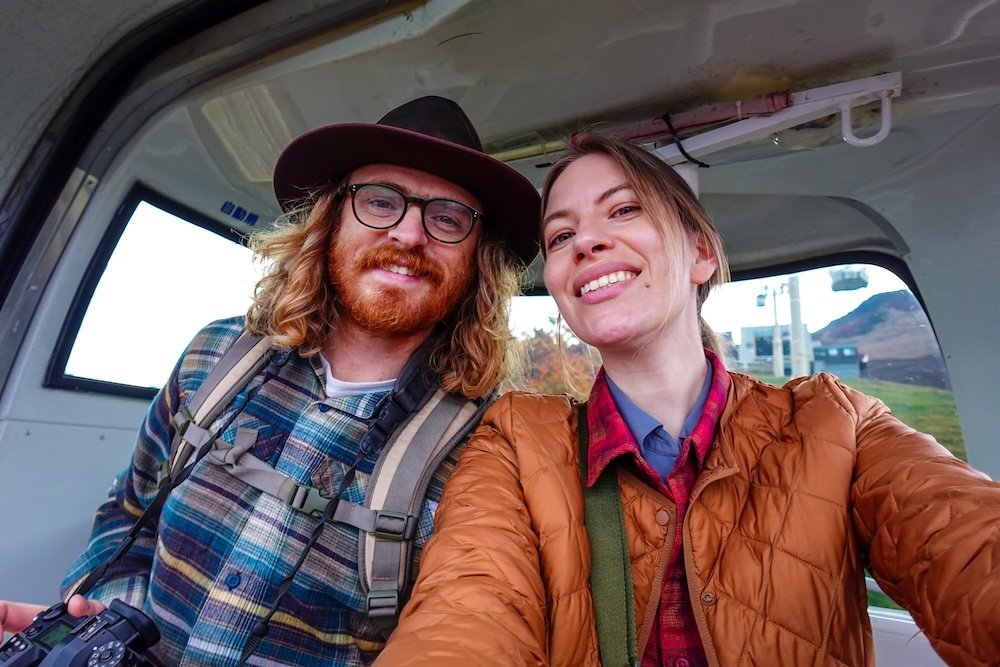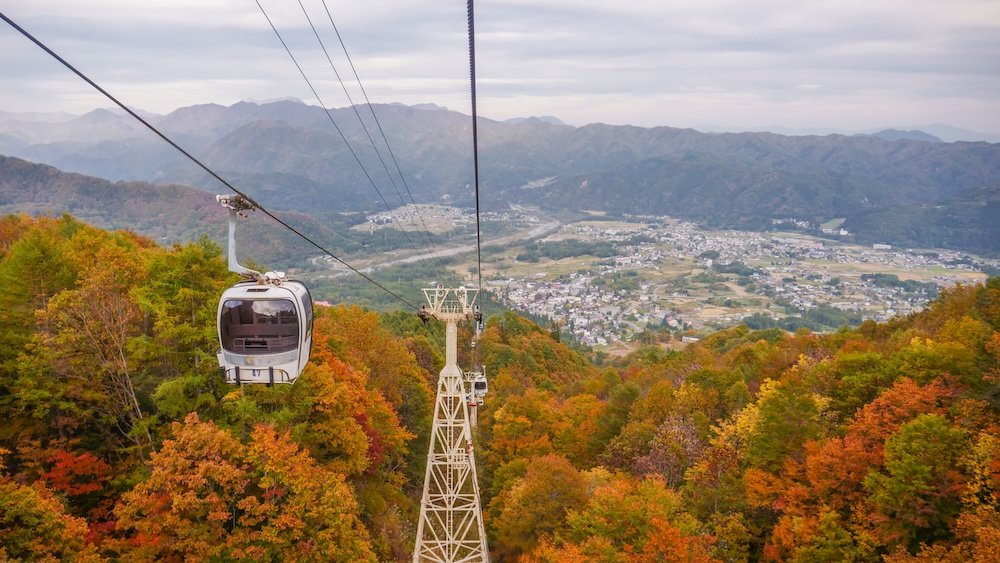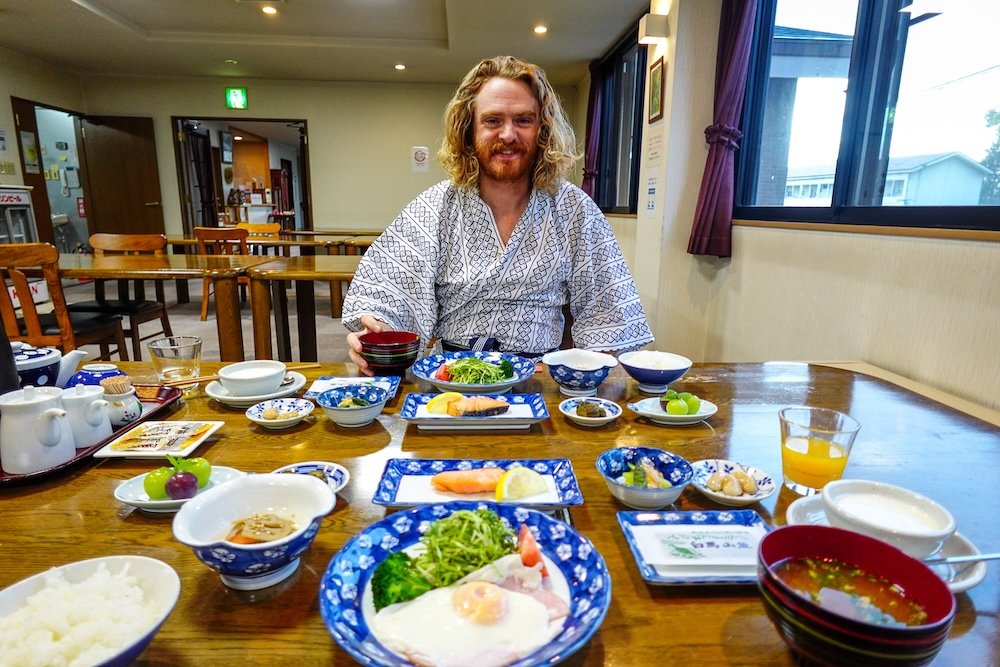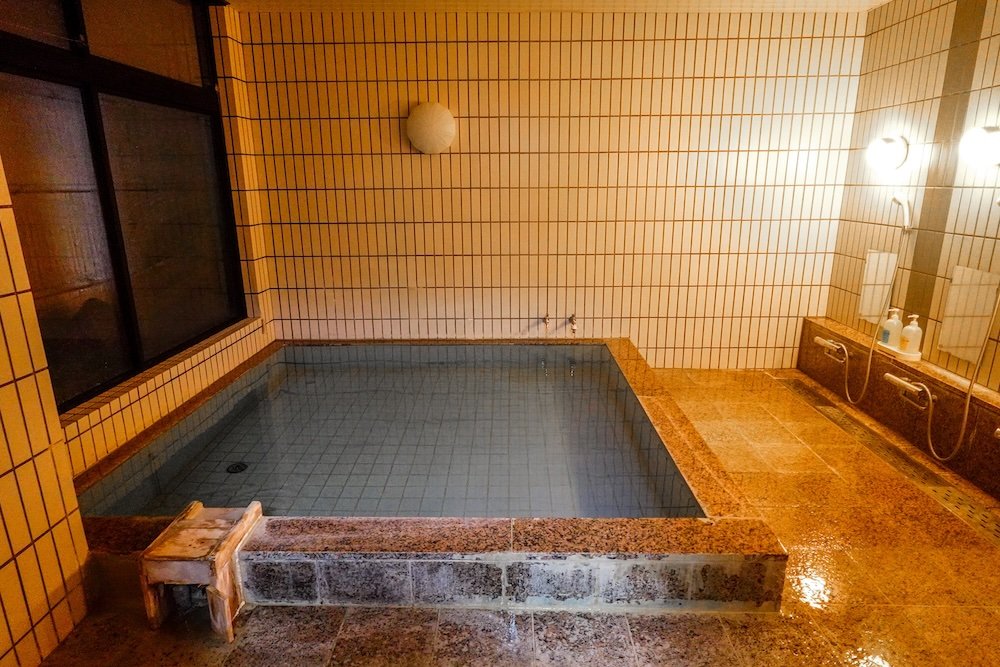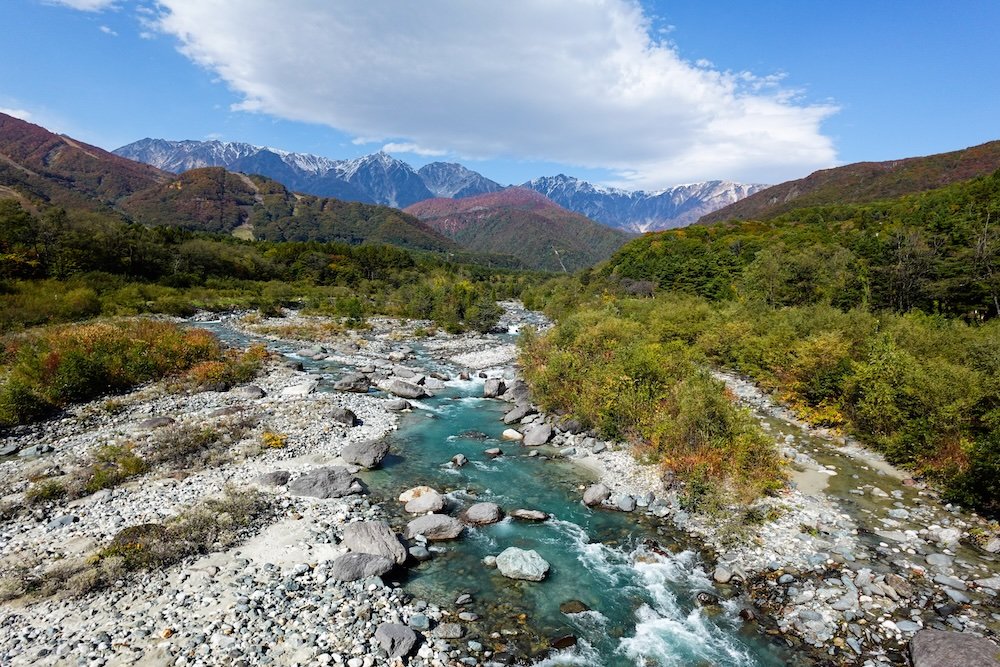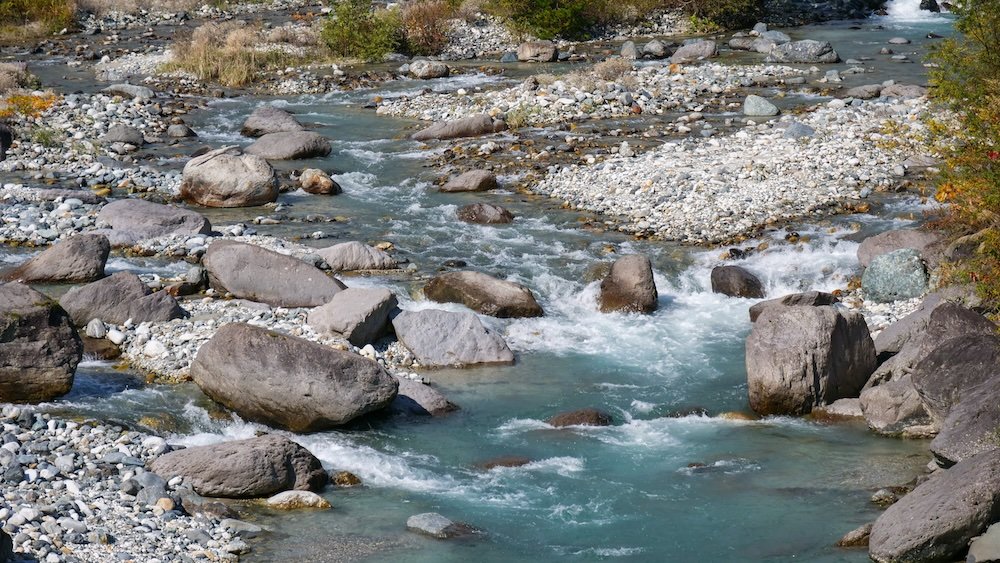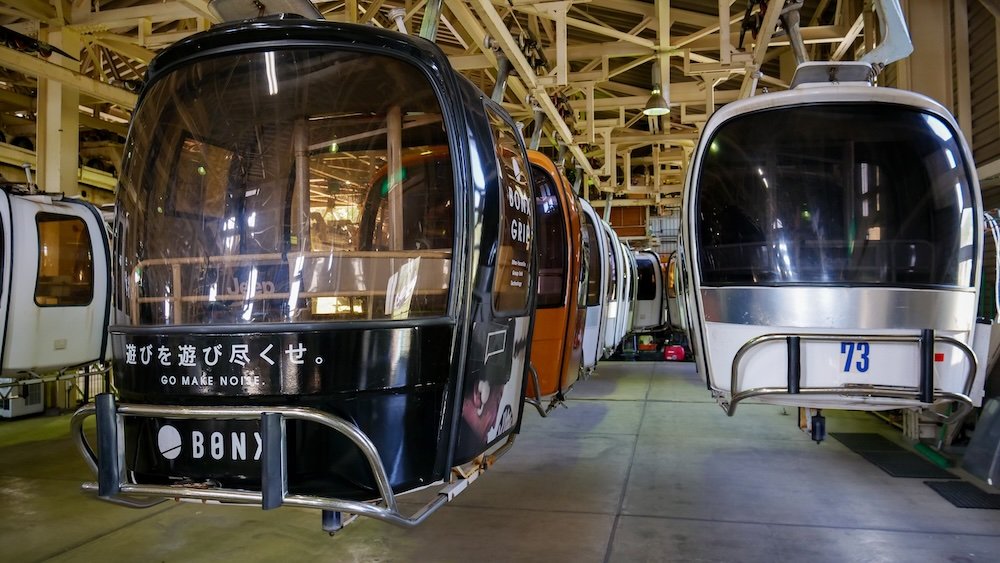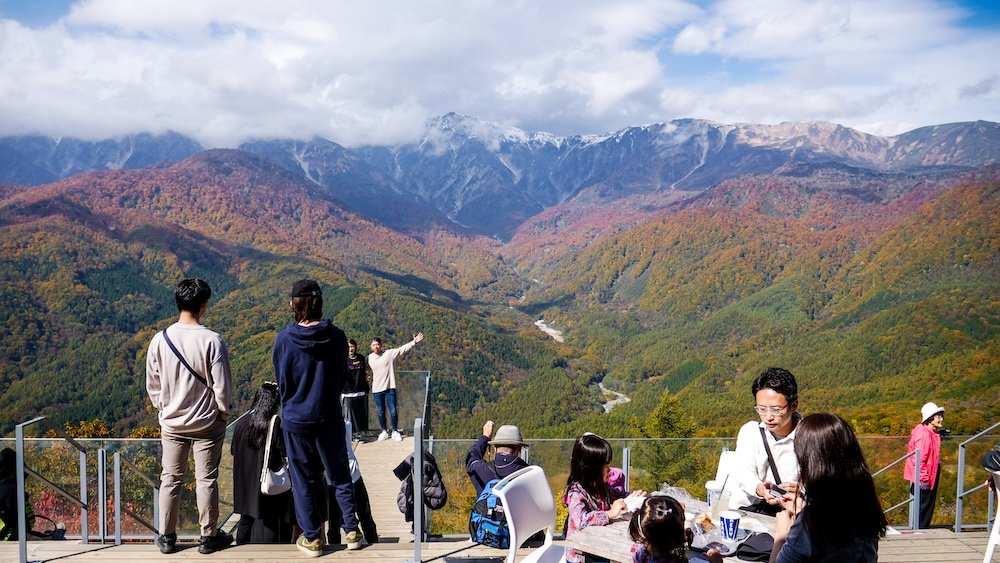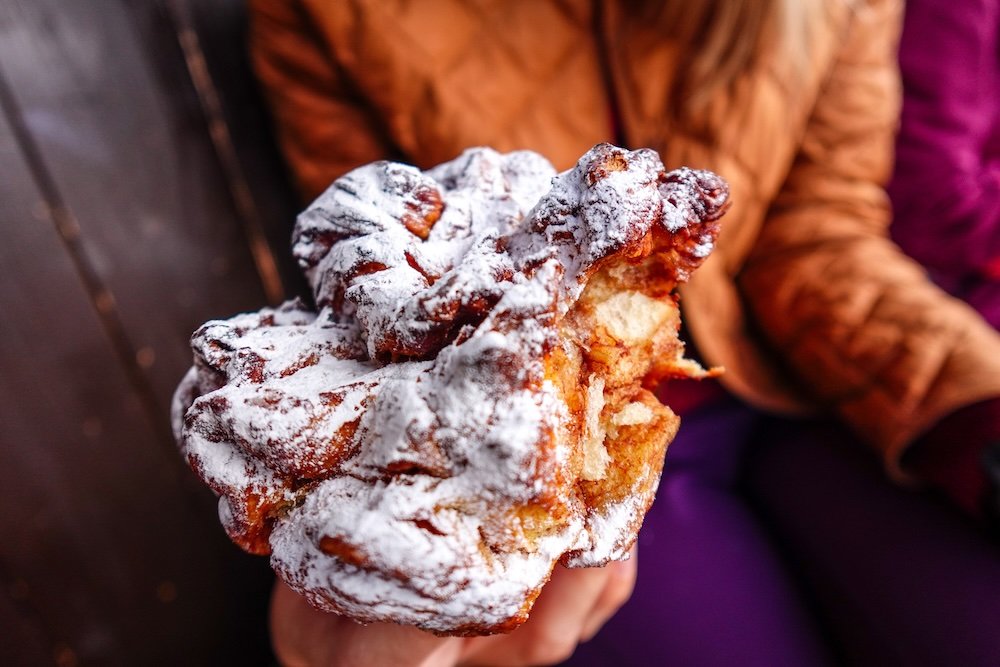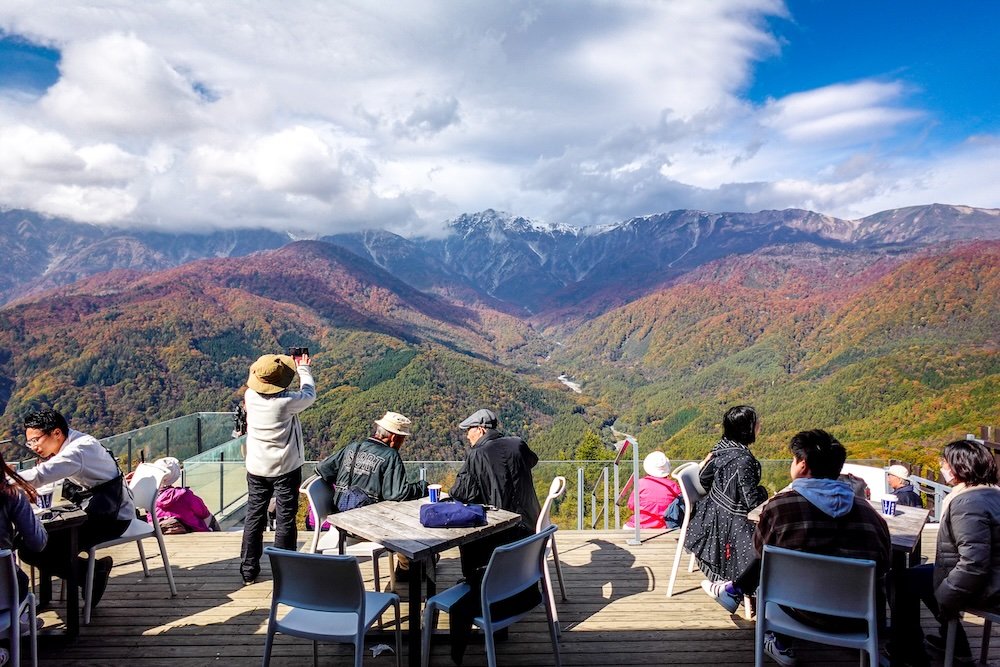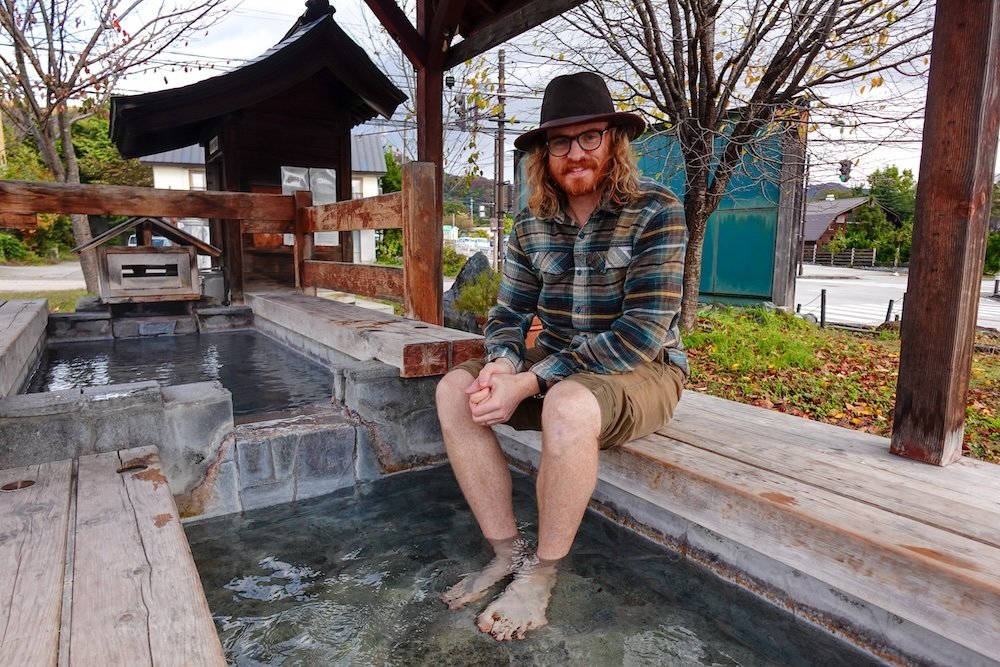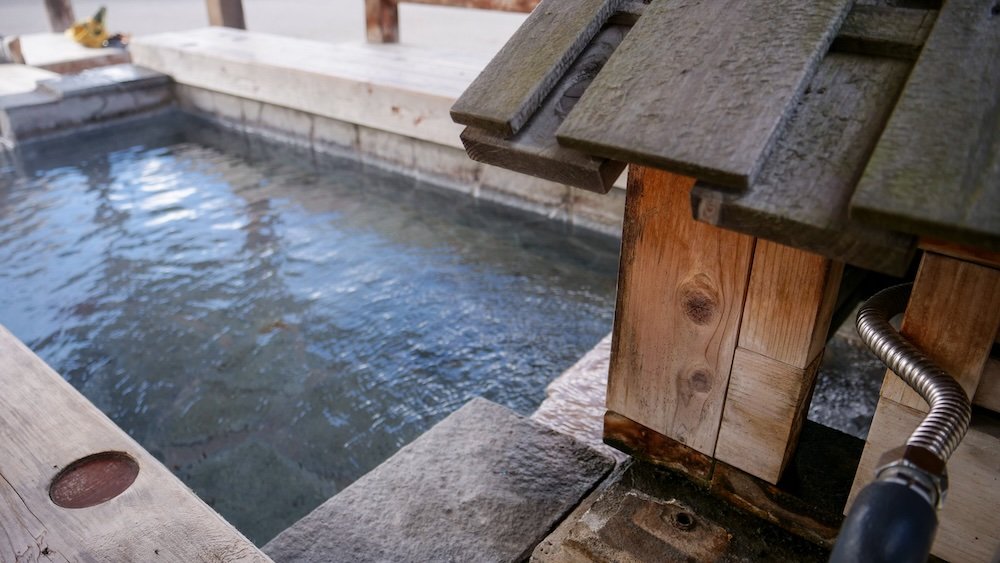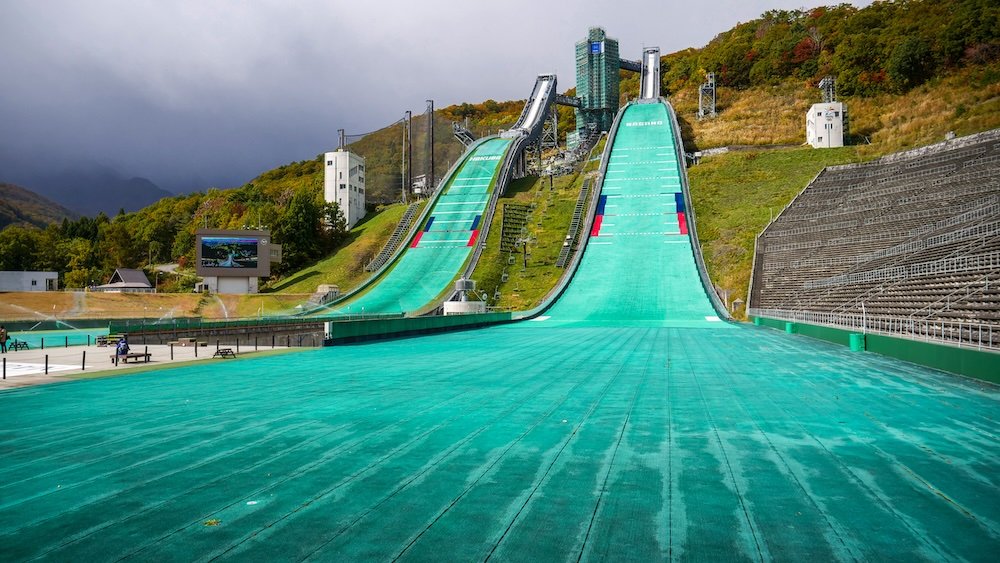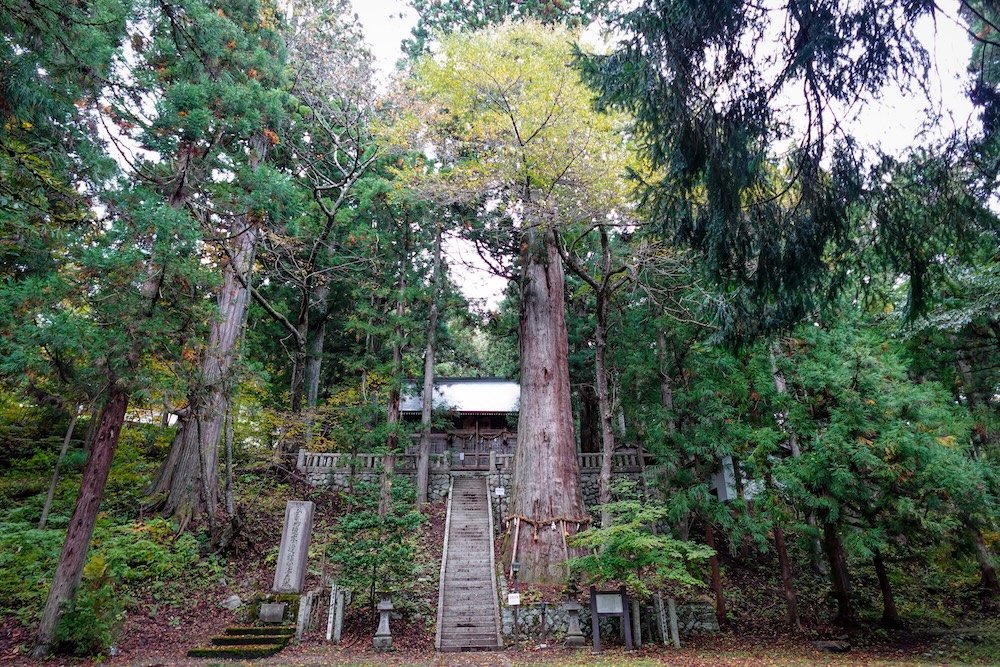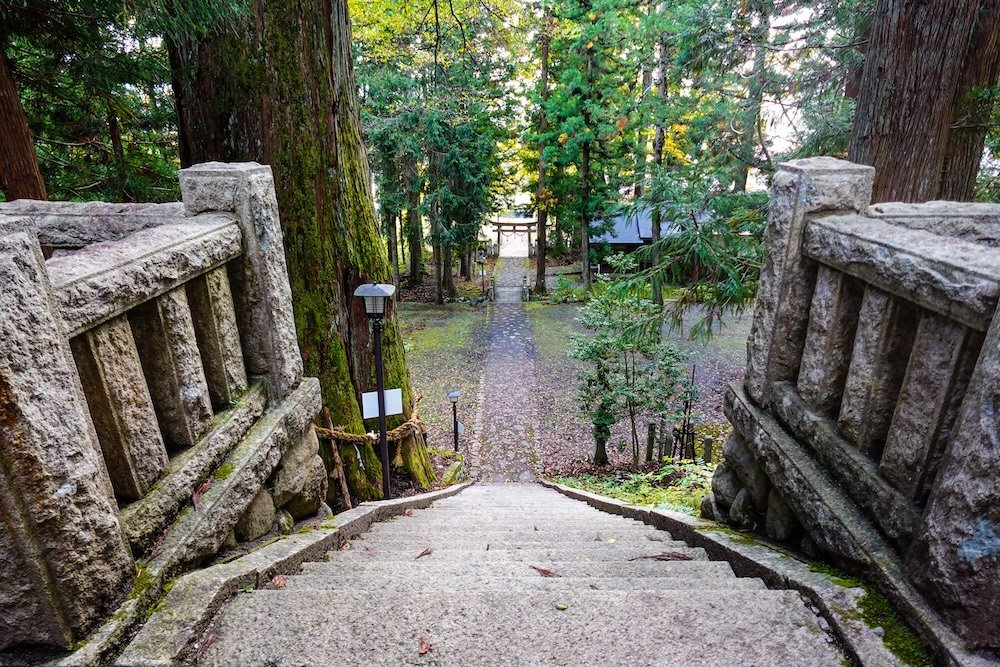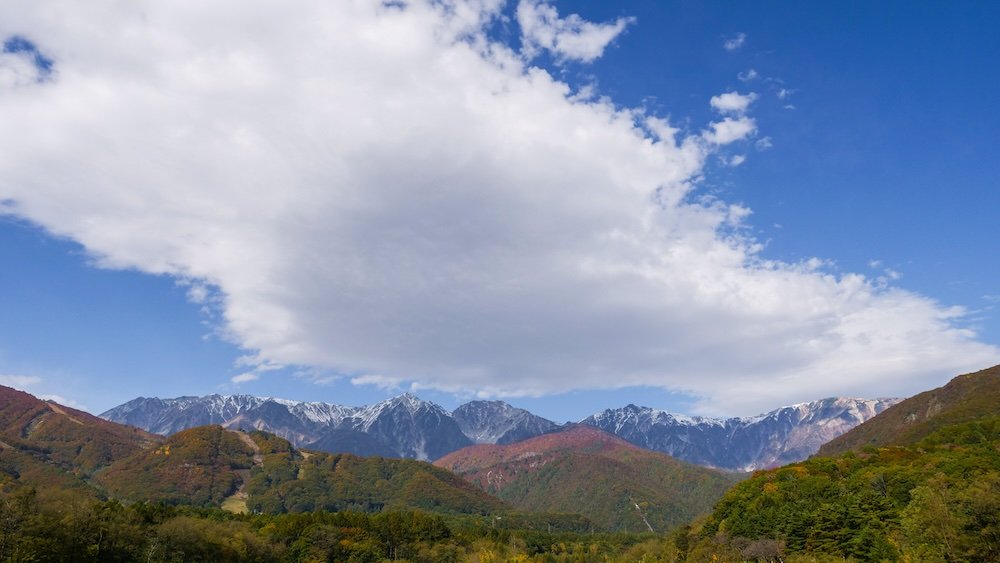Hakuba, nestled in the heart of Japan’s Northern Alps, greets visitors with towering peaks and breathtaking landscapes that shift through the seasons. Step off the train and feel the crisp mountain air energize your spirit, setting the tone for your adventure. Picture quaint villages framed by lush forests, crystal-clear streams, and postcard-worthy backdrops that make you reach for your camera time and again. In winter, blankets of snow transform Hakuba into a powdery playground for skiers and snowboarders, while warmer months invite hikers, cyclists, and nature-lovers to roam free. There’s a calm authenticity here that beckons you to slow down, explore at your own pace, and embrace the alpine lifestyle.
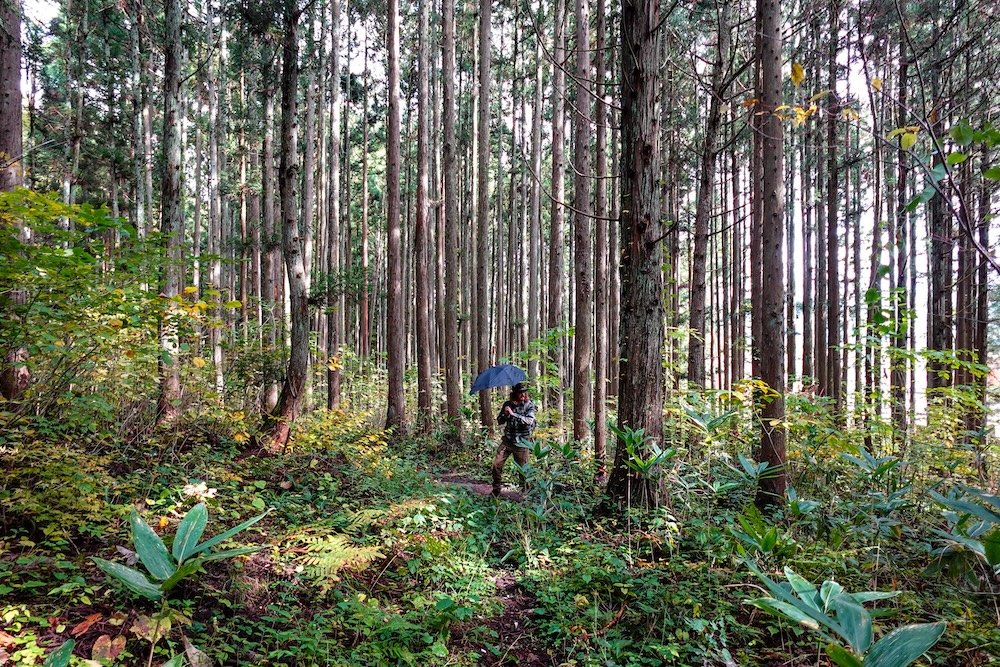
Setting the Scene: Hakuba’s Alpine Charm
- Must-See Views: Ride a gondola for panoramic mountain vistas, stroll along a flower-lined trail, or take in lake reflections at sunset.
- Seasons of Beauty: Witness cherry blossoms in spring, vibrant foliage in autumn, and serene snowy peaks all winter long.
- Local Vibe: Expect friendly smiles, helpful guidance, and a welcoming environment that feels like coming home.
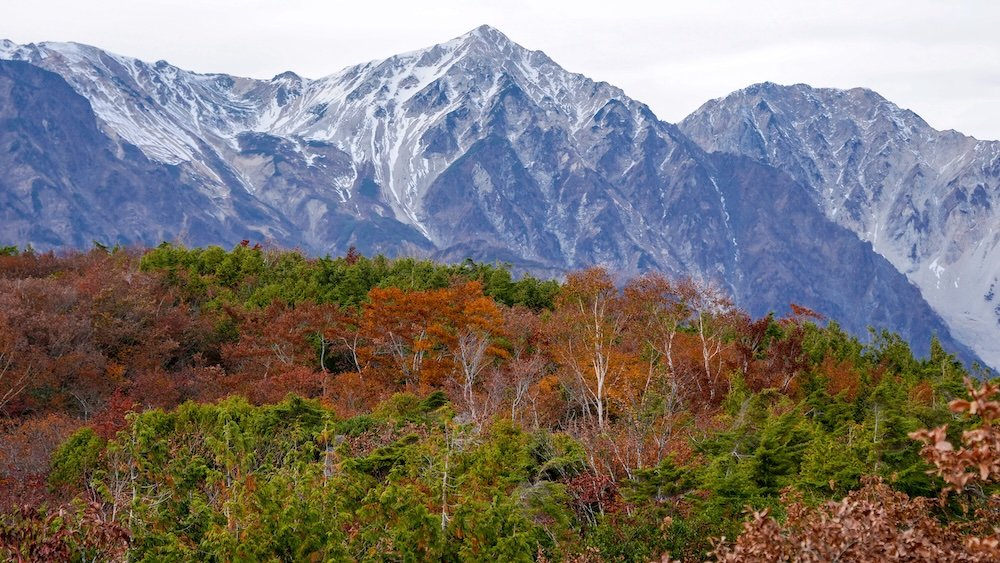
Tip: Pack layers; weather can shift quickly at higher elevations, ensuring you’re always comfortable regardless of the forecast.
source: Samuel and Audrey YouTube Channel: Nomadic Samuel + That Backpacker hosting
Adventure and Outdoor Activities
For thrill-seekers, Hakuba is a playground of endless possibilities. Strap on your skis in winter to carve fresh powder, or learn to snowboard on gentle slopes before graduating to steeper runs. In warmer months, trade skis for hiking boots, exploring hidden waterfalls, rushing rivers, and alpine meadows dotted with wildflowers. Mountain biking trails challenge your legs, while guided tours introduce canyoning or paragliding for those seeking new heights—literally. From adrenaline-fueled pursuits to mellow nature walks, Hakuba encourages you to step out of your comfort zone and embrace the great outdoors.
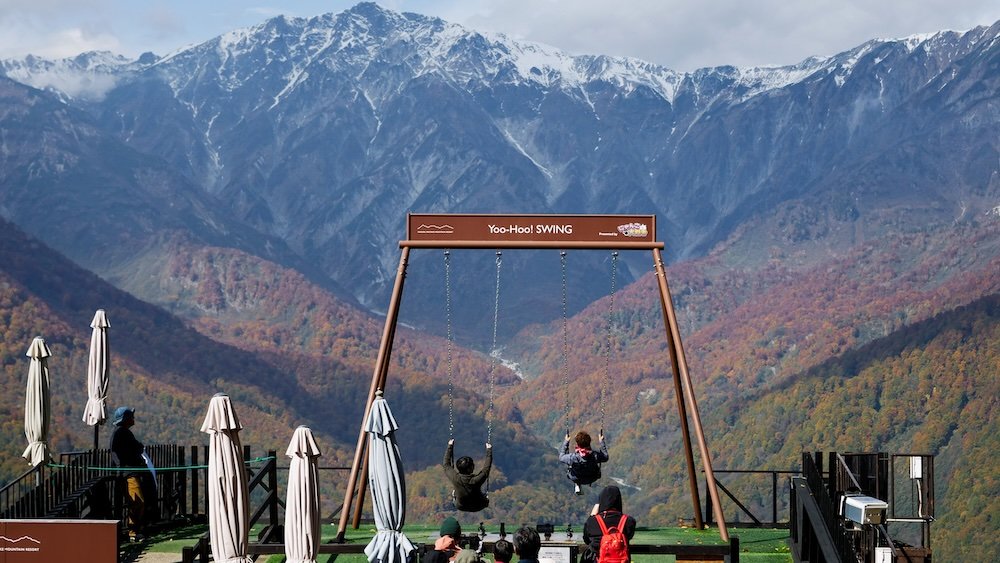
- Winter Sports: Ski at world-class resorts, try a snowshoeing tour, or attempt backcountry skiing for a deeper wilderness experience.
- Summer Thrills: Sign up for a guided canyoning trip, rent a mountain bike, or tackle a trail run through lush forests.
- Gentler Options: Opt for a scenic gondola ride, enjoy a short nature walk, or relax by a tranquil mountain lake.
Tip: Book activities in advance during peak seasons to ensure you snag a spot on popular tours or secure gear rentals.
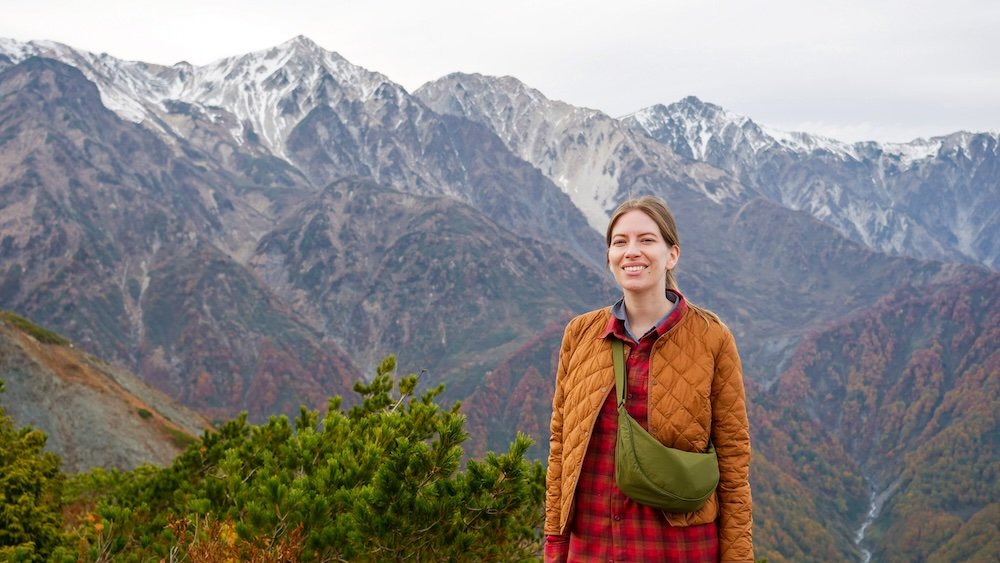
Top 8 Things To Do in Hakuba, Japan For Visitors
Tours For Visitors To Hakuba, Japan
Let’s explore some unique tours in Hakuba.
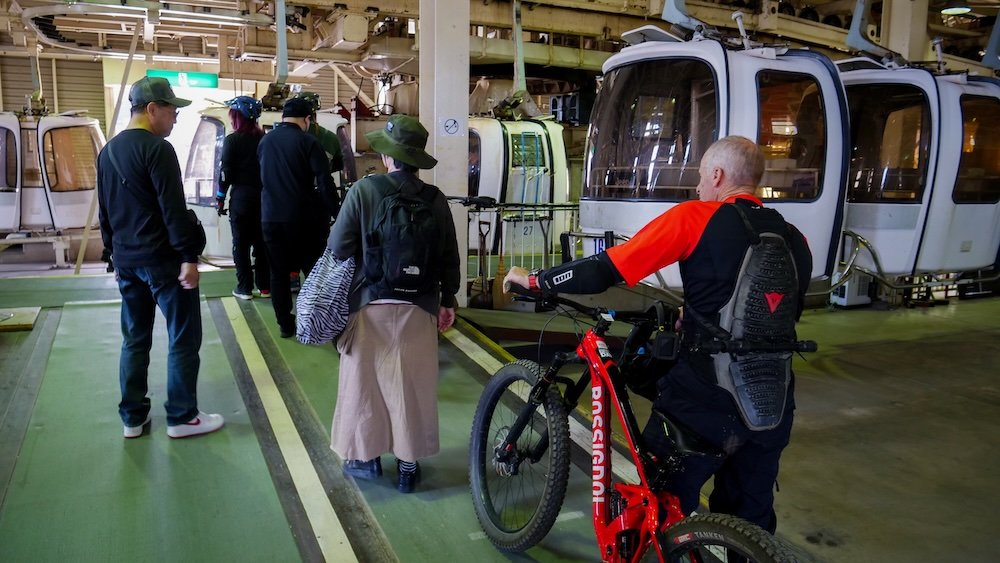
1) Mountain Biking Adventure Tour
This Mountain Biking Adventure Tour caters to thrill-seekers eager to zip through forest trails, over gentle slopes, and alongside rushing streams. You’ll begin with a quick briefing on safety gear and route options, ensuring both beginners and seasoned riders feel confident. Expect a mixture of smooth riding and occasional roots or rocks, all framed by the majestic peaks that Hakuba is known for. Frequent stops allow you to catch your breath, snap photos, and soak up the quiet beauty of the alpine environment. By the end, you’ll have earned that sense of accomplishment that comes from conquering new terrain.
- Must-Bring Items: Comfortable activewear, a small daypack, and plenty of water.
- Best Season: Early summer through autumn for mild weather and vibrant landscapes.
- Extra Perk: Guides often share local insights, pointing out hidden viewpoints and wildlife habitats.
Tip: Practice basic bike handling skills beforehand if you’re new to off-road cycling; a little preparation goes a long way.
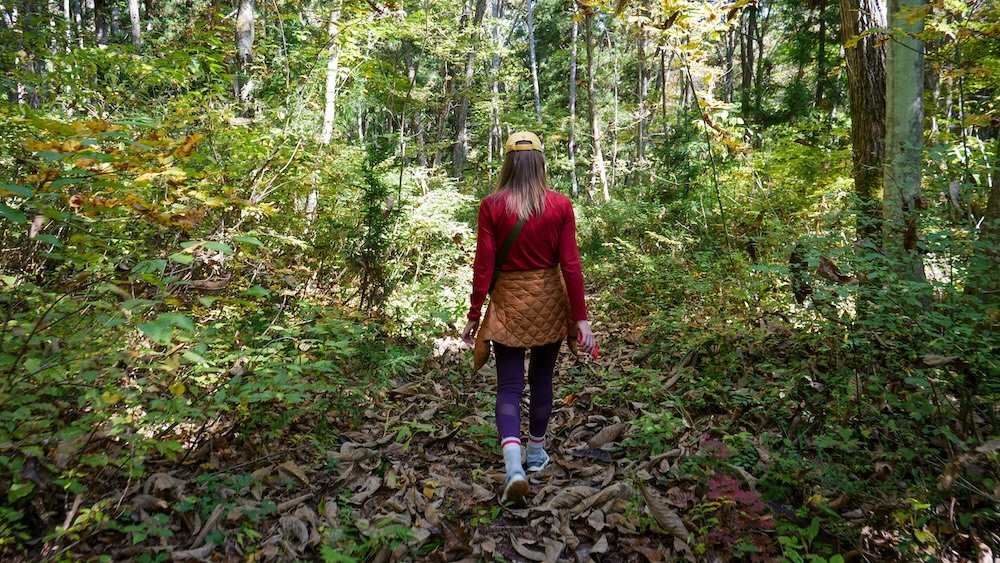
2) Nature & Wildlife Walk
The Nature & Wildlife Walk introduces you to Hakuba’s quieter side, where whispering leaves, winding streams, and occasional wildlife sightings define the experience. Led by an expert guide, you’ll learn about regional flora and fauna, uncovering tiny forest details often missed by the casual observer. It’s a slow-paced tour that encourages curiosity—spotting a rare bird, identifying unusual mushrooms, or following deer tracks through soft moss. Think of it as therapy for the soul, trading traffic noise for birdsong and digital screens for dappled sunlight. By journey’s end, you’ll feel more connected to the natural rhythms that shape this highland haven.
- What to Wear: Sturdy hiking shoes, light layers, and insect repellent in summer months.
- Family-Friendly: Suitable for all ages, offering an educational outing everyone can enjoy.
- Photography Tips: Bring a zoom lens for wildlife shots and practice patience waiting for that perfect moment.
Tip: Stay quiet and move slowly—you’ll increase your chances of spotting shy critters along the trail.
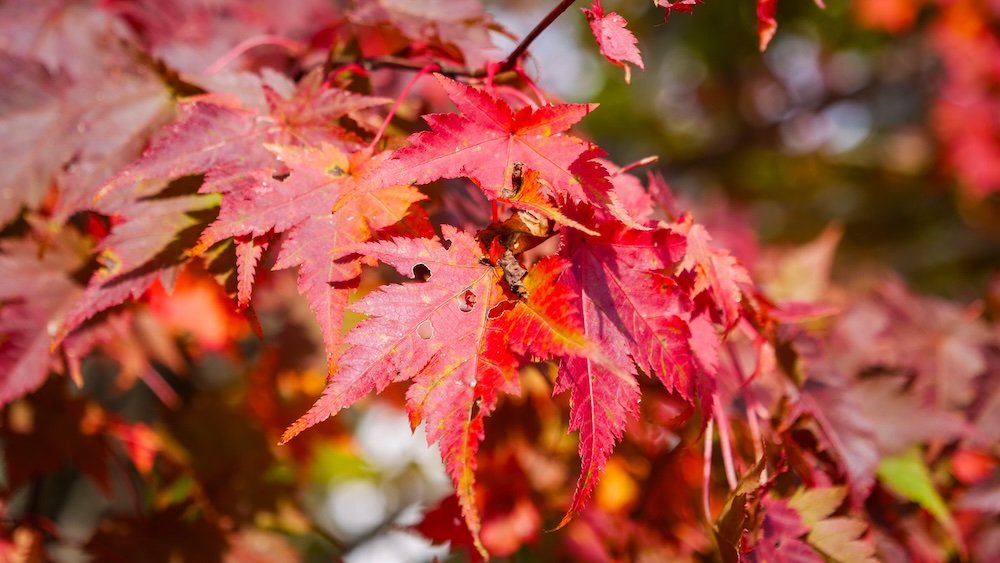
3) Cultural Village Experience
This Cultural Village Experience takes you beyond Hakuba’s slopes into the heart of local traditions and craftsmanship. You’ll meet artisans who spin tales through pottery, weaving, or woodwork, each piece reflecting centuries of history. Taste seasonal snacks that embody the region’s flavors, from savory miso-based dishes to delicate sweet treats. Walk through small museums or shrines where stories of samurai times and farming roots linger in the air. By connecting with people who call this valley home, you’ll leave enriched, carrying a deeper understanding of Hakuba’s cultural tapestry.
- Language Hacks: Learn basic Japanese phrases to enhance interactions, show respect, and spark friendly smiles.
- Souvenir Strategy: Consider handmade crafts, locally sourced teas, or a calligraphy piece as meaningful mementos.
- Immersive Options: Ask about workshops where you can try pottery or kimono-wearing firsthand.
Tip: Ask questions—artisans love sharing their process, making your visit more rewarding than simple sightseeing.

4) Snow Sports Intro Tour
If you’ve always wanted to try skiing or snowboarding, the Snow Sports Intro Tour is your gentle entry point. Instructors patiently guide you through basic techniques, so even if you’ve never seen snow before, you’ll feel supported and safe. You’ll start on gentle slopes, building confidence as you learn to balance, turn, and maybe even catch a bit of speed. Frequent breaks ensure you never feel overwhelmed, and hot cocoa at a mountainside café gives you something to look forward to. By the end of the session, you’ll have a grin plastered on your face, proud of each small victory on the snow.
- Gear Essentials: Waterproof jacket, insulated gloves, and goggles for glare and wind.
- Encouraging Atmosphere: Expect high-fives, cheers, and a no-judgment vibe among fellow learners.
- Progression Path: Instructors can offer next steps, suggesting private lessons or advising where to rent advanced gear.
Tip: Relax and trust the process; everyone starts somewhere, and Hakuba’s slopes are the perfect training ground.
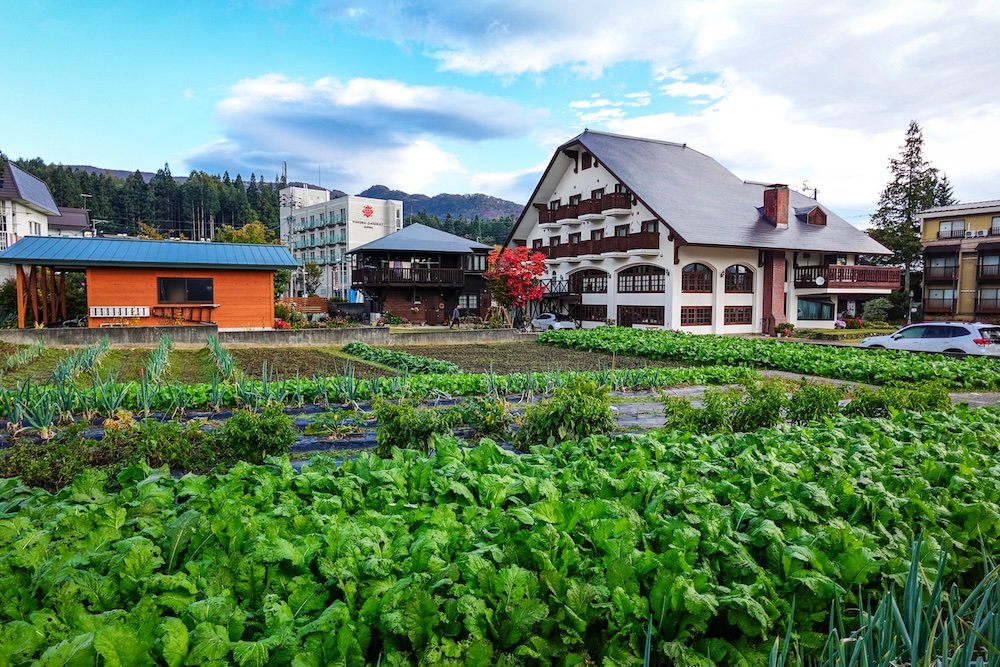
Hakuba Accommodations Guide: Hotels, Guesthouses and Hostels
Hotels
Hotels in Hakuba offer a comfortable blend of modern amenities and scenic surroundings, ensuring a relaxing base for your alpine adventures. Some feature mountain-view balconies, letting you wake up to snowy peaks or green valleys depending on the season. Front desk staff act like friendly guides, eager to share insider tips on local eateries, quiet nature trails, and upcoming festivals. After a day of hiking or skiing, there’s something soothing about returning to a warm lobby, perhaps sipping tea while chatting with fellow travelers. By the end of your stay, you’ll appreciate not just the convenience of onsite dining and Wi-Fi, but the welcoming atmosphere that makes you feel part of the Hakuba community.
- Amenities to Expect: Onsen baths, in-room Wi-Fi, and mountain-view lounges for relaxation.
- Location Advantages: Many hotels sit near ski lifts or hiking trailheads, saving time and energy.
- Extra Services: Some properties offer equipment storage, shuttle services, or guided tour bookings.
Tip: Book in advance during peak seasons to secure better rates and your choice of rooms with the best views.
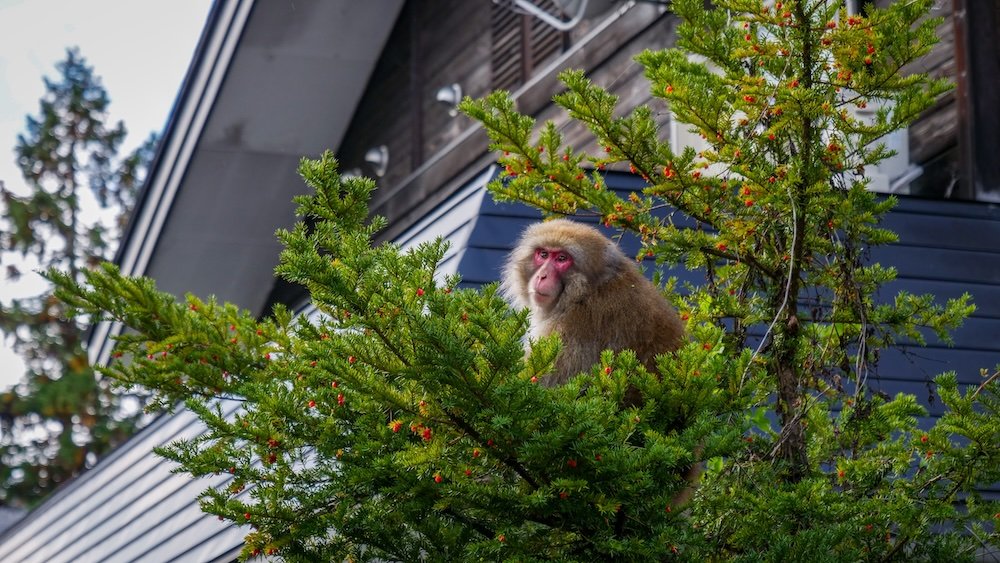
Ryokans
Ryokans, traditional Japanese inns, invite you to immerse yourself in a culture that values tranquility, authenticity, and thoughtful hospitality. Sliding shoji doors, tatami-mat floors, and yukata robes set the stage for an experience unlike any standard hotel. Evenings often bring multi-course kaiseki dinners featuring seasonal ingredients, paired with the gentle hush of a candlelit garden just outside. Onsen baths soothe tired muscles, and soft futon bedding ensures a restful night’s sleep, all while the scents and sounds of nature drift through your window. More than just lodging, a ryokan stay is a way to taste the elegance of old Japan, leaving you relaxed, inspired, and more connected to the region’s cultural heartbeat.
- Cultural Highlights: Enjoy a traditional tea ceremony, learn about local customs, or try a seasonal tasting menu for dinner.
- Wellness Touches: Onsen soaks, aromatic baths, and tranquil garden views create an atmosphere of calm.
- Personal Attention: Attentive staff may offer personalized suggestions, ensuring you experience Hakuba’s spirit fully.
Tip: Embrace the ritual—remove your shoes at the entrance, savor each meal course slowly, and engage with staff who love to share their heritage.

Guesthouses
Guesthouses in Hakuba deliver a casual, home-like setting where you can unwind after a day of outdoor exploration. Owners often double as local guides, pointing you toward hidden noodle shops, less crowded trails, or neighborhood festivals. Spaces may be cozy, but they’re filled with character—handcrafted decor, personal travel stories shared by other guests, and maybe a small garden to admire. Mornings often begin with a light breakfast and friendly banter, while evenings might involve communal chats over tea, exchanging travel tips and adventures. In an age of impersonal lodging, guesthouses remind you that travel is also about human connections and the joy of discovering a place through its people’s eyes.
- Affordable Comfort: Rooms are budget-friendly, perfect for longer stays or travelers seeking value.
- Local Insights: Expect personal recommendations, map pointers, and a warm handshake when you arrive or depart.
- Social Vibe: Common areas encourage conversation, enabling friendships that may last beyond your trip.
Tip: Ask the host for hidden gems—these personal suggestions can lead you to unforgettable places off the typical tourist path.
source: Samuel and Audrey YouTube Channel: Nomadic Samuel + That Backpacker hosting
Day Trips From Hakuba, Japan
Let’s explore day trip options in Hakuba.
1) Matsumoto & Matsumoto Castle
Matsumoto, a vibrant castle town, lies within easy reach of Hakuba, offering a refreshing contrast of ancient architecture and modern rhythms. Matsumoto Castle, dubbed the “Crow Castle” for its black exterior, stands majestically, guarding centuries of samurai stories beneath its eaves. Wander through its wooden interiors, climbing steep steps that lead to panoramic views of the city framed by distant peaks. Spend time in nearby streets, sampling local soba noodles or browsing artisan shops selling handcrafted ceramics and delicate washi paper. By the time you return, you’ll carry not just a camera full of castle shots, but a deeper appreciation for Nagano’s layered past.
- Travel Tip: Purchase a combination ticket for the castle and local museums, consider a guided tour for historical insights, and try a sake tasting at a nearby brewery.
- Seasonal Highlights: Visit in spring for cherry blossoms, autumn for foliage, and winter for fewer crowds.
- Local Treat: Don’t miss oyaki dumplings, a regional specialty, perfect for a quick snack.
Tip: Arrive early to beat the midday rush and enjoy quieter moments exploring the castle’s intricate architecture.
source: Samuel and Audrey YT Channel: That Backpacker & Nomadic Samuel as the hosts
2) Jigokudani Monkey Park
Jigokudani Monkey Park showcases snow monkeys at their most relaxed—soaking in hot springs surrounded by steam and serenity. A moderate walk through forested trails leads you to a thermal oasis where these red-faced macaques lounge, groom each other, and occasionally splash about. The park’s atmosphere feels almost surreal; it’s nature, comedy, and cuteness rolled into one unforgettable scene. Beyond the monkeys, the journey itself offers crisp mountain air and a glimpse of Japan’s wild side. Returning to Hakuba, you’ll feel as if you’ve stepped into a wildlife documentary and emerged grinning ear to ear.
- Essentials: Wear sturdy shoes for the forest trail, layer clothing for changing weather, and bring a camera with a zoom lens.
- Etiquette: Maintain respectful distance, avoid feeding monkeys, and store food securely.
- Time It Right: Early mornings or weekdays mean fewer visitors and more peaceful encounters.
Tip: Keep calm and quiet; patience rewards you with intimate moments watching these playful primates at ease.
source: Samuel and Audrey Travel and Food Channel: Nomadic Samuel & That Backpacker presenting
3) Azumino & Daio Wasabi Farm
Azumino, a tranquil rural area, invites you to slow down and appreciate Japan’s agricultural heartland. The Daio Wasabi Farm stands out as a must-see—lush wasabi fields irrigated by clear streams, with walking paths that reveal nature’s gentle artistry. Stroll along wooden footbridges, savoring the soothing sounds of water and the peppery scent of fresh wasabi leaves rustling in the breeze. Stop at small shops to sample wasabi-flavored treats, from wasabi ice cream to zesty pickles, each bite a pleasant surprise. Leaving Azumino, you’ll carry a newfound respect for simple pleasures and the rhythms of rural life.
- Photo Ops: Capture watermills, footbridges, and sunlit wasabi fields.
- Local Delights: Try wasabi soba noodles, wasabi beer, and even wasabi chocolate if you’re feeling adventurous.
- Family-Friendly: Easy walking paths, rental bikes available, and plenty of benches for breaks.
Tip: Bring an appetite; you’ll find more wasabi-infused snacks than you ever imagined, so be ready to indulge.
4) Togakushi Village & Shrines
Togakushi, hidden in cedar forests, feels like a spiritual retreat where nature and religion intertwine seamlessly. Follow ancient pilgrimage routes leading to Togakushi Shrines, each nestled deeper into the forest, connected by leafy trails and towering cedar trees. The sense of peace is palpable: sunlight filters gently through the canopy, moss muffles footfalls, and each shrine’s delicate architecture resonates with quiet reverence. Make time for a soba lunch, as Togakushi is famous for its buckwheat noodles, a simple yet hearty meal that complements the forest’s serenity. Departing, you’ll carry the forest’s hush in your memories, a reminder that silence can be a powerful form of connection.
- What to Bring: Sturdy shoes, a light jacket, and insect repellent for summer months.
- Scenic Points: Don’t miss Kagami-ike Pond for mirror-like reflections, old cedars that have witnessed centuries, and small teahouses offering rest.
- Cultural Insight: Learn about ninja history at the Togakushi Ninja Museum if time allows.
Tip: Set aside a full morning; exploring shrines, paths, and soba shops at a leisurely pace makes the experience more meaningful.
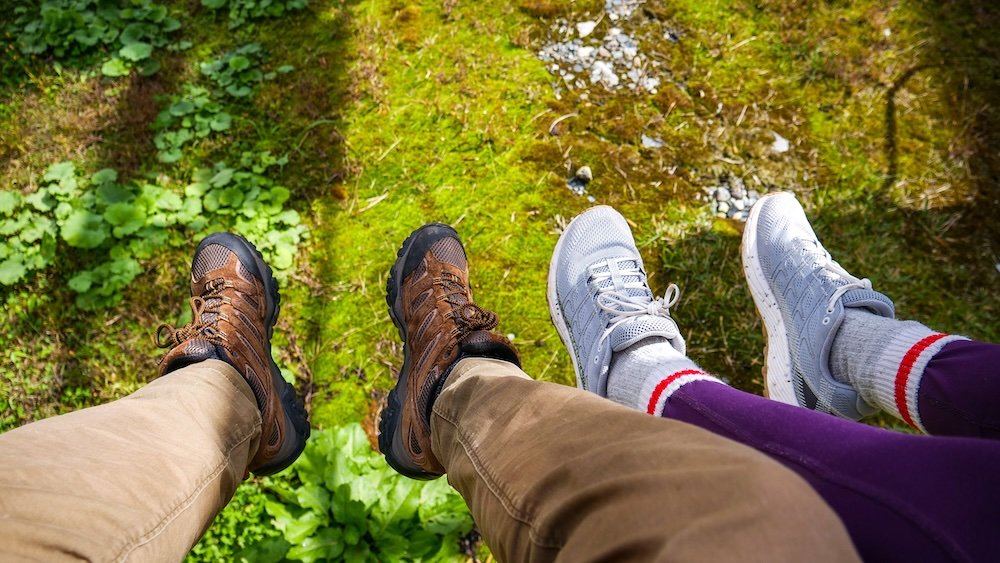
Hakuba Transportation Guide
Getting around Hakuba might seem tricky at first glance—tucked between rugged peaks and winding valleys—but rest assured, a range of transport options cater to travelers.
1) Trains and Stations
Hakuba Station acts as a gateway, linking you to the rest of Japan via reliable rail lines that sweep through scenic valleys. Trains are typically punctual, with English signage assisting even first-timers in finding their way. While major cities like Tokyo or Nagano connect seamlessly, the journey to Hakuba itself is a visual treat—mountains rising on the horizon, rivers curling below. Reserve seats on limited express trains if you prefer guaranteed space and prime window views. By the time you arrive, you’ll have relaxed into the region’s rhythm, soothed by the gentle sway of the carriage and the whisper of distant peaks.
- Ticket Tips: Consider a Japan Rail Pass for extended travel, purchase tickets in advance for peak seasons, and compare fares for limited express vs. local trains.
- Arrival Comforts: Hakuba Station often has lockers, tourist info desks, and cafés to ease you into your journey.
- Next Steps: From the station, hop on local buses, taxis, or even hotel shuttles to reach your final stop.
Tip: Arrive early at stations to scout out platform info, maybe grab a snack, and relax before your train rolls in.
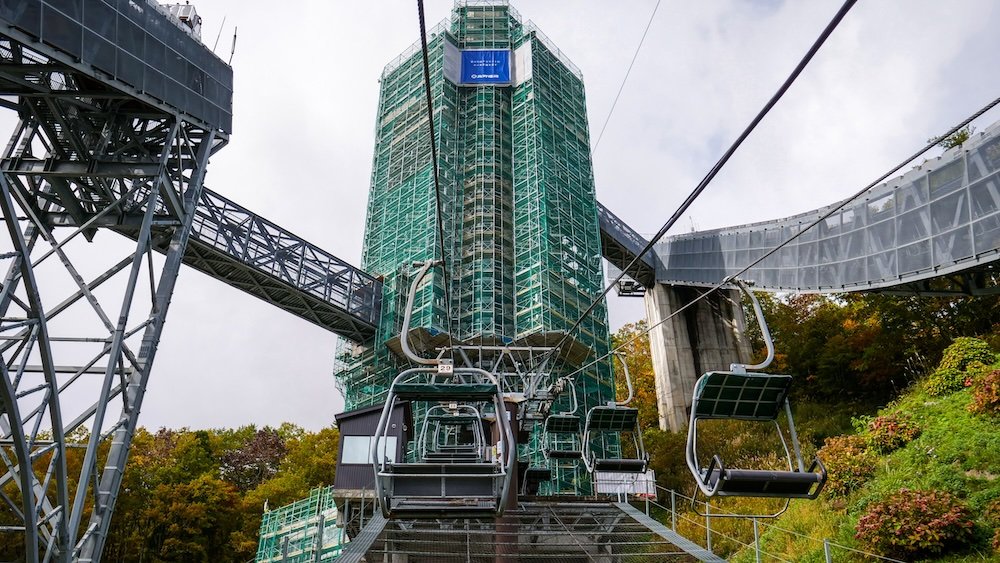
2) Local Buses and Ski Shuttles
Local buses in Hakuba are your go-to solution for bridging gaps between villages, slopes, and trailheads. Winter sees a flurry of ski shuttles ferrying you from hotels to lifts, often free or included with ski passes—a lifesaver when lugging gear. English schedules, posted at key stops and online, simplify planning, though a bit of patience helps if timetables vary. The ride itself can be enjoyable: glimpses of snow-draped pines, quaint chalets, and fellow adventurers full of anticipation. By the end of your stay, you’ll likely have a favorite route or driver’s smile etched into your memory.
- Key Routes: Identify shuttles to major resorts, seek local loops for village tours, and note seasonal services that appear in peak snow months.
- Payment Methods: Carry small change or an IC card, depending on the bus; sometimes exact fare is required.
- Off-Peak Tips: Traveling midweek often means less crowded buses, ensuring a more relaxed ride.
Tip: Snap a photo of the timetable at your stop, so you can plan your day without searching for schedules each time.
3) Taxis and Private Transfers
Taxis in Hakuba offer door-to-door convenience, perfect for when you’re short on time or traveling with heavy gear. While fares run higher than buses, splitting costs with friends or family can make it a practical choice. Drivers may speak limited English, but showing a written address or pointing on a map usually does the trick. Some companies offer private transfers to and from airports, ensuring a smooth start or end to your trip. By choosing taxis wisely—perhaps only for early-morning departures or late-night returns—you’ll strike a balance between comfort and budget.
- Handy Extras: Ask about child seats, confirm luggage capacity, and request English dispatch services if available.
- Evening Advantage: Taxis shine when buses stop running early, making it easy to return after a late dinner.
- Airport Links: Private transfers from Nagano Station or Matsumoto Airport can spare you tricky connections.
Tip: Carry your hotel’s address in Japanese, ensuring smoother communication and fewer misunderstandings.
4) Rental Cars, Bicycles, and Seasonal Moves
For those craving flexibility, renting a car lets you wander off the beaten path—maybe exploring hidden lakes or quaint hamlets you’d never see from a bus window. Winter driving requires confidence in snowy conditions, but if you’re up for the challenge, it’s freedom on four wheels. In summer or autumn, consider renting a bicycle to pedal through gentle farmland, stopping at roadside stands for fresh apples or a cool drink. Keep an eye on weather: a sudden shift can mean adjusting plans or switching from bike pedals back to a reliable bus seat. By embracing different modes based on the season and your mood, you’ll experience Hakuba in ways both grand and intimate.
- Car Rentals: Check international driving permit requirements, consider winter tires, and plan parking strategies near slopes.
- Bicycle Bliss: Rent bikes from local shops, follow riverfront paths, and pause at scenic viewpoints.
- Weather Wisdom: Tailor your transport—cars in winter, bikes in summer, and buses year-round for stress-free travel.
Tip: Stay flexible; don’t force a car adventure in a blizzard or a bike ride in pouring rain—adapting keeps travel fun and safe.
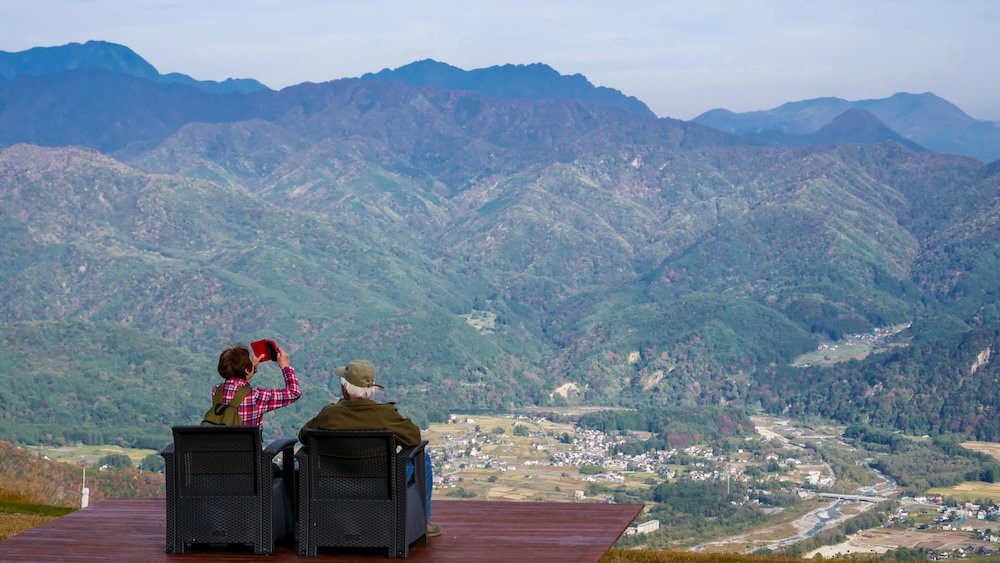
Hakuba Travel Questions Answered: Practical Tips, Seasons, Transport & Local Advice
How many days do you really need in Hakuba for a first visit?
For a first trip, I’d aim for at least three full days in Hakuba, not counting your travel days. That gives you time for one or two big mountain days, a gentler day of sightseeing or day trips, and a bit of wiggle room for weather. If you’re coming mainly to ski or snowboard, five to seven days is the sweet spot so you can sample different resorts, rest your legs, and not feel rushed. In summer or autumn, three to four days lets you combine gondolas, hikes, cafés, and a day trip like Matsumoto or Jigokudani without turning your trip into a sprint.
When is the best time of year to visit Hakuba for snow and for hiking?
It depends. If your priority is skiing and snowboarding, aim for mid December to late March, with the most reliable snow and deepest powder usually in January and February. Early and late season can be gorgeous but a bit more hit or miss, especially at lower elevations. For hiking, biking, and green scenery, the sweet spot is roughly late June through October, with peak summer bringing lush forests and warm days, and late October often delivering beautiful autumn colours. Spring can also be fun, but expect a mix of lingering snow higher up and muddy trails as everything thaws.
Is Hakuba worth visiting if I don’t ski or snowboard?
Absolutely. Hakuba is much more than just ski runs; it’s an easy win if you love mountains but don’t care about strapping planks to your feet. You can ride gondolas for huge views, wander easy valley walks, relax in foot baths and onsen, poke around shrines like Shimofurimiya Hosonosuwa, and linger in cafés and bakeries with ridiculous mountain backdrops. Add in mellow nature walks, cultural village experiences, and day trips to Matsumoto Castle or Daio Wasabi Farm and you’ve got a solid mountain break with zero need to ski.
What’s the easiest way to get to Hakuba from Tokyo?
Easiest route for most people is Shinkansen plus bus. You take a bullet train from Tokyo to Nagano, then transfer to a highway bus that runs directly to Hakuba, with the whole journey usually taking around three to four hours depending on connections. Another option is the limited express train from Shinjuku that runs directly to Hakuba on certain schedules, which is slower but avoids transfers. In winter there are also seasonal ski buses that run from Tokyo and sometimes from the airports straight to Hakuba, which can be convenient if you’ve got a lot of luggage and don’t want to wrangle it on trains.
Do I need a car in Hakuba, or can I rely on public transport and shuttles?
Nope, you don’t need a car unless you really crave maximum freedom or want to explore lots of remote corners. In winter, ski shuttles and local buses do a good job connecting hotels, villages, and lifts, so you can spend the whole trip car free. In the warmer months, buses still run on key routes and many activities can arrange pick up if needed. A rental car becomes handy if you’re keen on chasing more off the radar lakes, trailheads, and rural villages on your own schedule, but it also means dealing with snowy roads in winter and parking logistics, so weigh the trade offs.
Where’s the best area to stay in Hakuba for first-timers?
For most first time visitors, staying around Happo Village is the most straightforward choice because you’re close to lifts, restaurants, rental shops, and bus stops. If you want something a bit quieter but still very convenient for skiing, the Wadano area works well thanks to its proximity to slopes and its mix of lodges and hotels. Echoland has more of a casual, social vibe with bars, cafés, and restaurants, which can be fun if your evenings matter as much as your days. In short, pick Happo for easy logistics, Wadano for ski focused comfort, and Echoland if you want nightlife and food variety.
Is Hakuba a good destination for families with kids?
Yes. Hakuba is very family friendly, especially in winter when many resorts offer gentle beginner slopes, ski schools, and snow play areas that don’t require any technical skills. You can mix shorter days on the slopes with low effort activities like gondola rides, foot baths, easy valley walks, and cafés with mountain views so younger kids don’t get overwhelmed. In the green season, nature walks, riverside picnics, and soft adventure tours like wildlife walks or cycling are great for mixed ages. The main thing is to choose accommodation close to shuttles or lifts so you’re not dragging tired kids and gear all over town.
How expensive is Hakuba and what kind of daily budget should I plan?
Moderate to pricey is a fair way to describe it. On a tighter budget staying in a guesthouse or hostel, cooking some of your own meals, and skipping paid tours, you might get by on roughly eight to twelve thousand yen per person per day before lift tickets or gear rental. If you prefer mid range hotels or ryokan stays, eating out most meals, and booking a few tours, it’s easy to slide into the fifteen to twenty thousand yen per day range or more. Winter sports costs stack quickly once you add passes, lessons, and rentals, so that’s where planning ahead and watching for package deals can really help.
What should I pack for Hakuba in winter and in summer?
Winter packing starts with layers. Think a moisture wicking base layer, warm mid layers like fleece or wool, and a waterproof and windproof outer shell for both jacket and pants, plus insulated gloves, a warm hat, neck warmer, and proper snow boots with good grip. Goggles and sunglasses are essential because the snow glare is no joke on a sunny day. In summer and early autumn, switch to light, breathable layers with a thin fleece or jacket, a packable rain jacket, comfortable walking shoes or light hiking boots, sun protection, and insect repellent. No matter the season, Hakuba’s mountain weather can change quickly, so I always pack one extra layer more than I think I’ll need.
Is Hakuba safe, and are there any common problems or scams to watch out for?
Overall, Hakuba feels very safe and the usual urban scams you might worry about in big cities are not really a thing here. The main risks tend to be nature related: injuries on the slopes, slips on icy roads, getting caught in bad weather on the mountains, or minor accidents if you drive on snow without experience. As always in Japan, petty crime levels are very low, but I still keep an eye on my valuables in busy public spaces and on trains. I’d strongly recommend travel insurance that covers winter sports or outdoor activities, because a simple fall on the slopes or a twisted ankle on a trail can get expensive fast without coverage.
How busy does Hakuba get in peak season, and how can I avoid the biggest crowds?
Busy periods cluster around holidays, weekends, and prime snow weeks. The most crowded times in winter are usually the Christmas and New Year period, long weekends, and around major Asian holidays when international visitors pour in, which means packed lifts and higher prices. To dodge the worst of it, aim for midweek dates, come slightly earlier or later in the season, and start your ski days early so you get in a couple of quieter hours before late risers appear. In the green season, Hakuba is generally calmer, but sunny weekends during school holidays can still get lively, so the same trick of visiting midweek works nicely.
Are there onsen or hot springs near Hakuba, and what etiquette should I know?
Yes. There are several onsen and public baths in and around Hakuba, plus ryokan baths, and they’re one of the best ways to thaw out after a cold day. Basic etiquette is simple but important: wash and rinse thoroughly at the shower area before you get into the shared bath, go in completely naked unless there’s a very specific swimsuit rule posted, and keep towels out of the water. Speak quietly, avoid splashing, and never dive or swim. If you have tattoos, check each onsen’s policy; some are relaxed, some ask that you cover tattoos with patches, and a few may not allow them at all, so it pays to confirm ahead of time.
Is Hakuba manageable if I have limited mobility or bad knees?
Mostly yes, but with caveats. The valley floor is relatively flat and many hotels, cafés, and bus stops are reachable without big hills, so with some planning you can still enjoy the views, gondolas, and village atmosphere. The challenges come from snow and ice in winter, stairs at older stations or ryokan, and uneven paths at some viewpoints and shrines. If mobility is an issue, I’d lean toward staying in a larger modern hotel near Happo or close to shuttle stops, focus on gondola rides and scenic cafés rather than steep hikes, and consider visiting in the green season when you’re not navigating icy streets.
Can I visit Hakuba as a day trip from Tokyo, or should I stay overnight?
Technically, yes, you can push Hakuba as a day trip from Tokyo if you take early and late trains and accept a long day on the move. Realistically, I wouldn’t recommend it because by the time you factor in three to four hours each way with transfers, you don’t get much relaxed time in the mountains. Staying at least one or two nights changes the experience completely; you can catch a sunset or sunrise on the peaks, soak in an onsen, and explore at a slower pace. Hakuba rewards lingering, not rushing through with one quick gondola ride before you race back to the city.
Hakuba Travel Guide: Final Thoughts
You might realize there’s a festival you missed this time, a new slope opening next season, or a restaurant praised by locals you never got around to visiting. Instead of seeing departure as an end, treat it as a promise—a gentle vow that you’ll return to discover what you left unexplored. Between now and your next visit, keep an eye on weather patterns, local news, and cultural calendars, ensuring that next time you’ll delve even deeper. This mindset transforms your travel into an ongoing dialogue, letting Hakuba’s evolving narrative keep you engaged, inspired, and always curious.
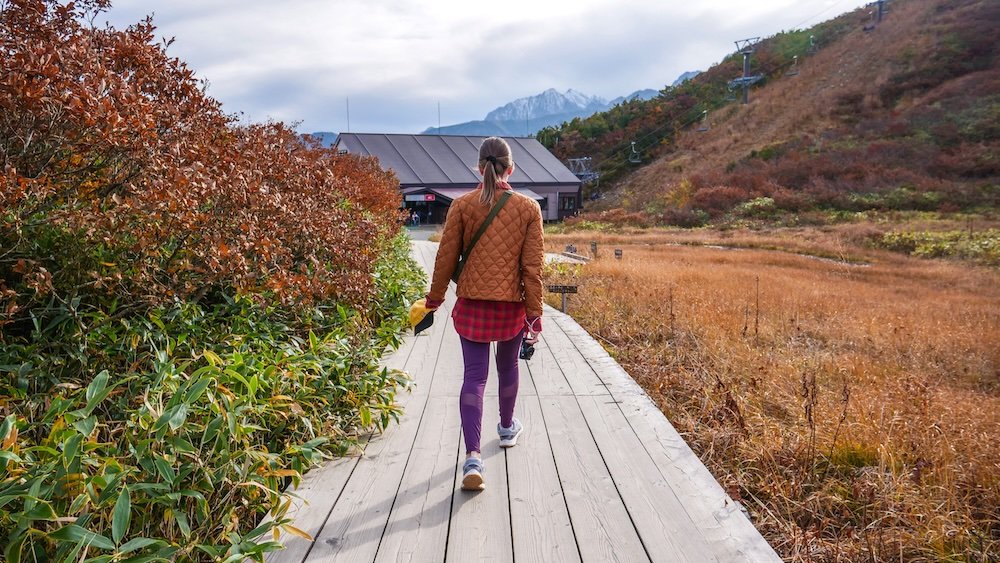
Planning Your Return
- Future Goals: Aim to visit in a different season, challenge yourself with a new outdoor sport, or explore neighboring villages beyond Hakuba’s core.
- Staying Informed: Follow tourism boards, social media updates, and online travel communities for tips on emerging hotspots.
- Traveler’s Toolkit: Maintain notes, photos, and maps from this trip, using them as a foundation for planning the next adventure.
Tip: Keep a travel journal; jotting down memories, addresses, and ideas helps you return with clear goals and fresh excitement.

